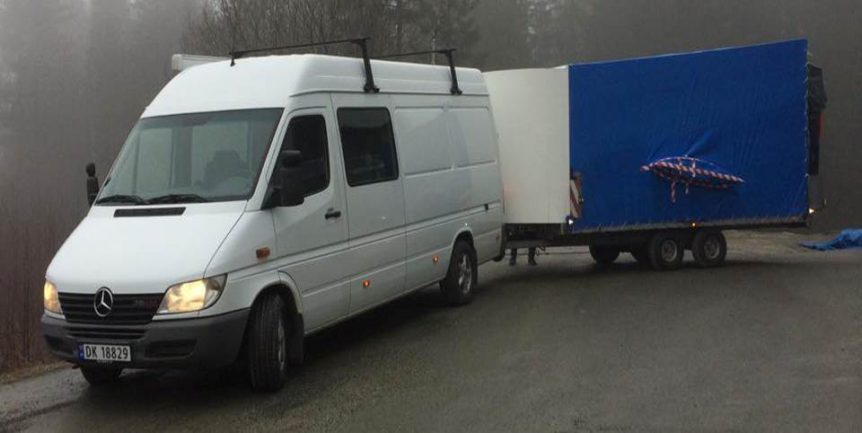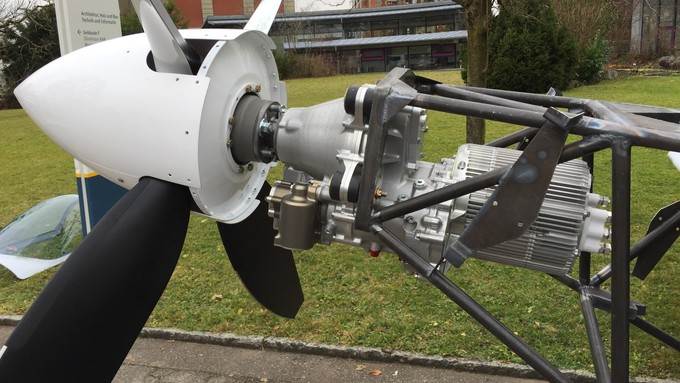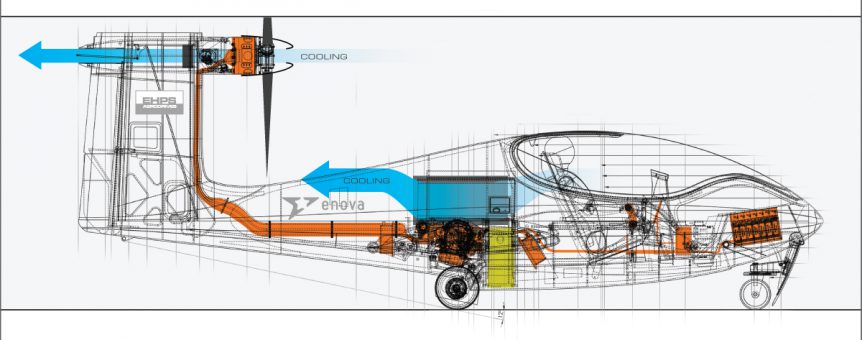Tomas Broedreskift, on his Equator Facebook page, reports, “Successful motor test with propeller mounted today with #engiro! Celebrating the milestone with some German (beer glass emoticon) this evening! (noise maker emoticons) Amazing to see the thing come alive at last.” As the video shows, the Equator P2’s motor can be made to run in reverse, useful for backing out of moorages or avoiding river debris when the amphibian settles on the water. Engiro makes range extenders on a custom basis for a variety of applications including (surprise!) amphibious aircraft. The Equator P2’s first long-distance trip, 1,361 kilometers (843 miles) from Norway to Aachen, Germany was obviously not by air, but by hand-crafted trailer, to Engiro’s headquarters where the motor tests took place. Following those tests, the hardy team will trek another 600 kilometers (373 miles) to Friedrichshafen, where the P2 will hold a place of honor at Aero17’s E-Flight Expo. Doubtless, attendees at Aero who find Hall 7 and booth …
Smartflyerchallenge – Europe’s First Fly-In for Electric Powered Aircraft
Air meets have been an important part of aviation history, bringing pilots, planes nad the public together in a symbiotic gathering. This was true in aviation’s genesis; things gaining a tremendous impetus with air meets throughout Europe and America following Wilbur Wright’s 1908 public demonstrations near Le Mans, France. René Maier, ex-Colonel of the Swiss Army and current President of the newly formed organization team for an annual event organized at the Grenchen Regional Airport, has announced the SmartFlyer Challenge, touted as the first fly-in for electric aircraft. The event, to be held September 9 and 10, 2017, will make Grenchen “the center of electric flight,” according to the organizers. Static and air displays of electric and hybrid-electric powered aircraft will help drive that message home. Organizers advertise at least four aircraft scheduled to appear, including an electrified Votec 221 being prepared by a group of university students at Innocampus Biel at the Bern University of Applied Sciences, Hangar 55’s Hamilton …
Equator P2 Assembled, Ready to Go
Exciting new pictures from Tomas Brodreskift show that his nearly decade-long project has reached a happy completion. The Equator P2, born in the mind of a talented industrial designer, seemed like a nice dream when your editor first saw it in renderings. As one would expect from an accomplished product designer, the aircraft looked wonderful, set in inspiring backgrounds. A Man, A Plan, An Airplane As Tomas’ web site explains, “In 2008 the two Industrial Design students and pilots Tomas Broedreskift and Oeyvind Berven started work on the new EQP2 Xcursion, Equator’s first attempt on the light aircraft market. In this start–up phase the Equator team are working on making project assignments, design briefs, and specified diplomas that can be worked on by students. Therefore we encourage every student with relevant studies and an aerospace dream to join our efforts and in time become part of the new Equator Team that will ultimately bring amphibian flying to a new level. …
Adam and Jamie are Paying Attention
Dr. Seeley alerted your editor this morning that Adam Savage and Jamie Hyneman’s web site, Tested.com, featured an entry on electric aircraft, “Fuel-Free Flight: the State of Electric Airplanes,” by Terry Dunn. Dunn does a good job of covering history and advantages of electric aircraft – complete with a quote from Dr. Seeley about the good neighbor aspect of quiet electric airplanes. He also discusses the barriers to electric aircraft development beyond current motor gliders and light aircraft – mainly the question of obtaining batteries that have much better energy densities than those currently available. “The batteries currently available are adequate to provide suitable range for some flyers. As the pool of available batteries improves, so will the range of electric aircraft and the number of pilots who embrace them. Despite continued progress, I think that a ground-breaking battery breakthrough is necessary before electric powered airplanes can become commonplace in the near term.” Despite the obstacles, he notes that the …



